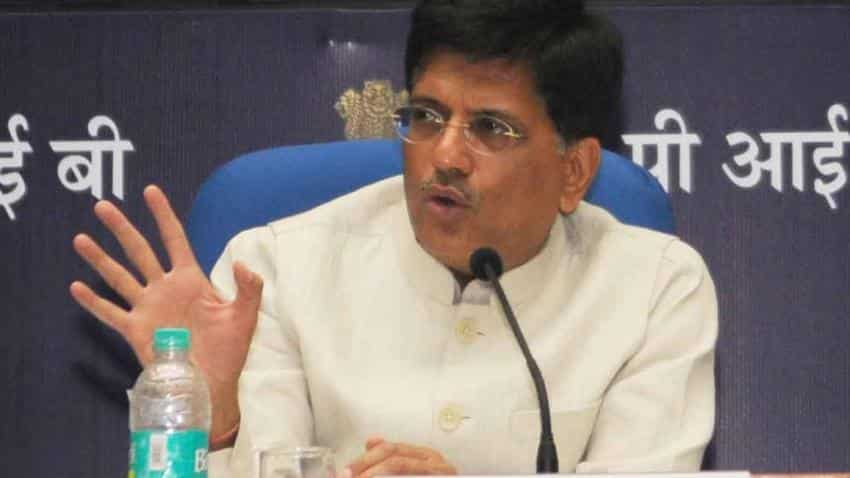Will not cut govt stake in power PSUs below 51%: Piyush Goyal

Supporting Finance Ministry's disinvestment plan for public sector undertakings, Union Minister Piyush Goyal has said his ministry will not reduce the government's stake in power sector PSUs below 51 %.
"Finance Minister can do whatever (as much disinvestment) he wants to do. We will support him. But we will not go for (reducing government stake) below 51 %. That is what we had announced for CoaI India and our other PSUs," Power, Coal, New and Renewable Energy Minister Goyal told PTI.
Elaborating further he said: "Management and control of the PSUs should remain with the government. Last year divestment in PFC and REC was done. If they want then we are ready for another round."
The government has set a disinvestment target of Rs 56,500 crore for the fiscal. Of this, Rs 36,000 crore is to come from minority stake sale in PSUs and Rs 20,500 crore from strategic sale. The government has already kick-started the disinvestment programme for the current fiscal with 11.36 % stake sale in NHPC, which fetched Rs 2,700 crore. It has lined up as many as 15 PSUs including Coal India, NMDC, MOIL, MMTC, National Fertilisers, NALCO and Bharat Electronics for divestment in 2016-17.
Recently, Niti Aayog had submitted two separate lists for dealing with sick units and those PSUs where strategic sale is possible. Under strategic sale, government reduces stake to 49 % or below. In common parlance it is known as privatisation.
During 2015-16, the government managed to notch up Rs 25,312 crore through disinvestment, less than half the target of Rs 69,500 crore. It had raised around Rs 24,500 crore in 2014-15 by selling stake in companies, about Rs 16,000 crore in 2013-14 and Rs 23,960 crore in 2012-13. It had raised around Rs 14,000 crore in 2011-12 and over Rs 22,100 crore in 2010-11.
Asked about the impact of increase in coal prices by Coal India, Goyal said: "We are trying to rationalise it. We are not increasing the price of coal. When there will be drastic reduction in price of certain grade of coal (high calorific value) then there will be some increase in some other grades." He explained this will lead to increase in use of higher calorific value coal and reduce quantities to generate same amount of power which will ultimately reduce freight cost.
"You need to blend the high calorific value coal as its prices have come down. You will require less quantity of coal and save freight. If I will not rationalise coal prices then there will be more imports, which would not be in nation's interest," he said.
Get Latest Business News, Stock Market Updates and Videos; Check your tax outgo through Income Tax Calculator and save money through our Personal Finance coverage. Check Business Breaking News Live on Zee Business Twitter and Facebook. Subscribe on YouTube.
RECOMMENDED STORIES
08:22 AM IST






 'Angel tax' exemption: Will this give Modi's 'Startup India' mission a push?
'Angel tax' exemption: Will this give Modi's 'Startup India' mission a push? Sebi, exchanges gears up surveillance to handle Rexit jitters
Sebi, exchanges gears up surveillance to handle Rexit jitters Hope to become member of NSG by end of 2016: Sushma Swaraj
Hope to become member of NSG by end of 2016: Sushma Swaraj